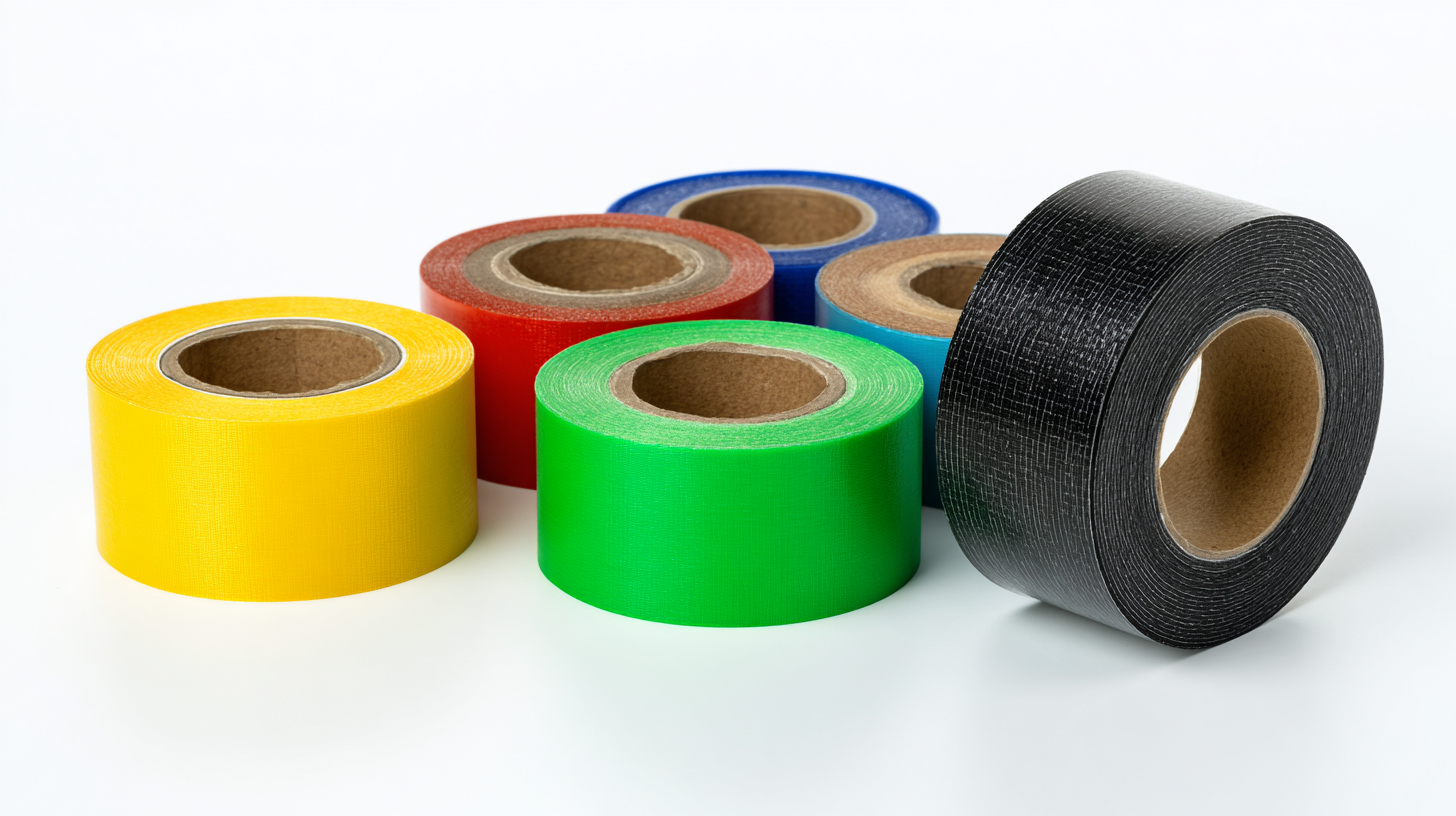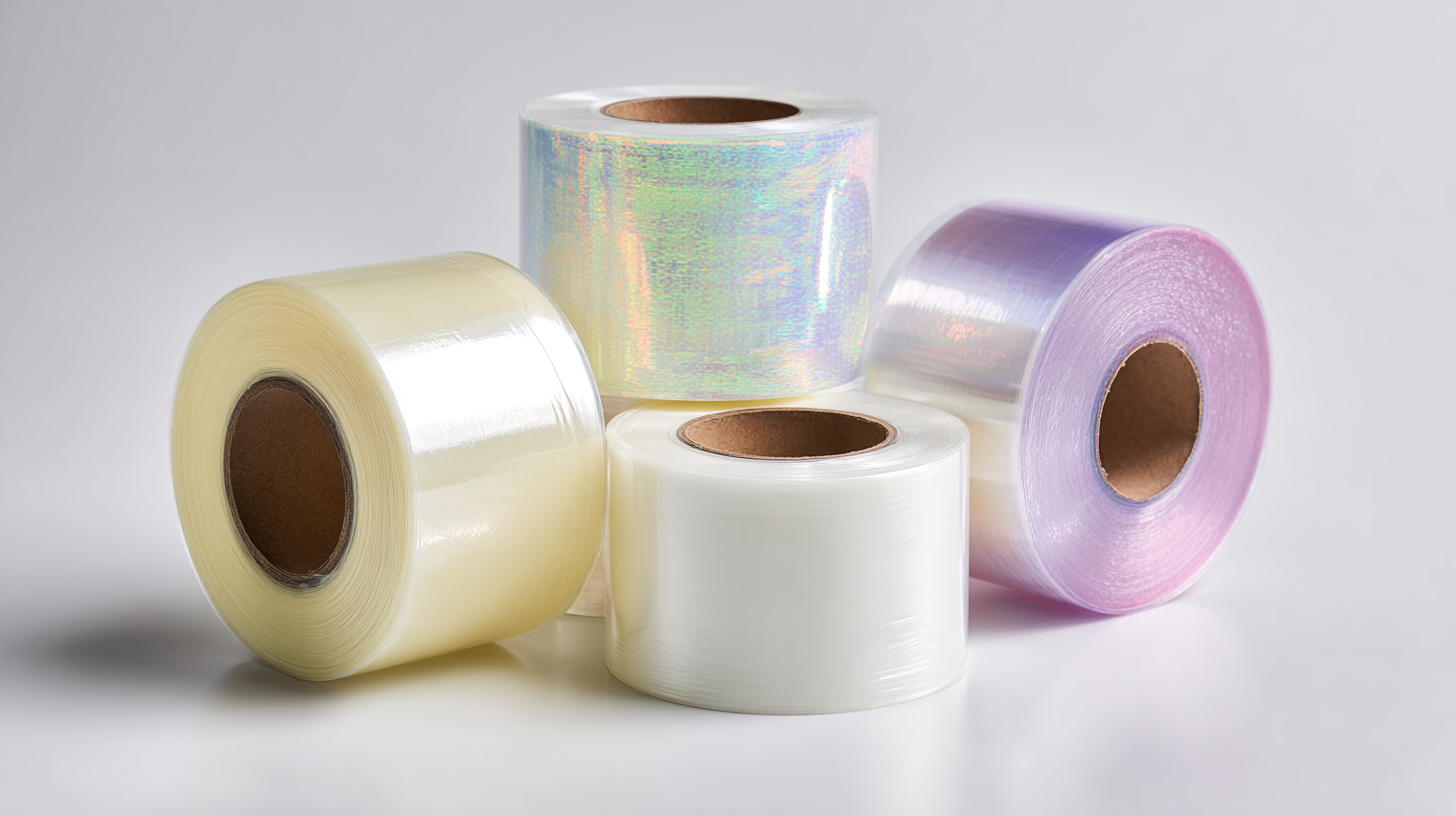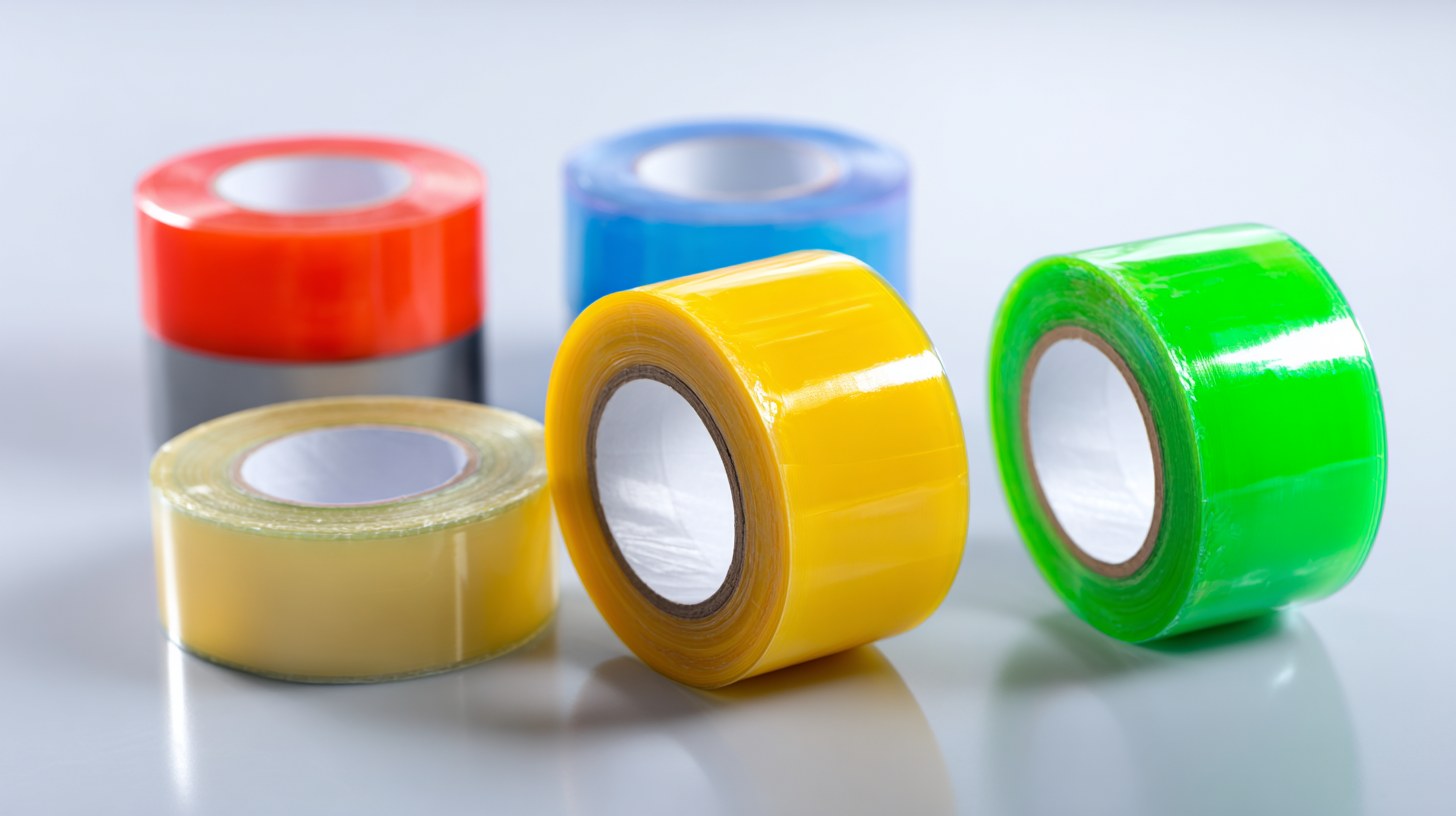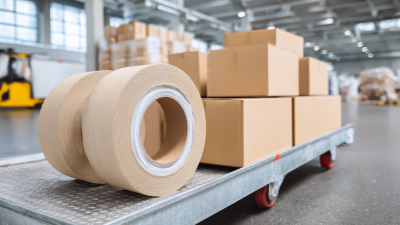Leave Your Message
In today's fast-paced packaging industry, the choice of materials plays a critical role in ensuring product safety and operational efficiency. Among the myriad of options available, "Plastic Tape for Packaging" stands out due to its versatility and reliability. According to a recent report by Smithers Pira, the global demand for adhesive tape, particularly plastic variants, is projected to reach approximately $65 billion by 2025, driven by the increasing need for durable, tamper-proof, and environmentally sustainable packaging solutions. As businesses look to optimize their packaging processes, understanding the various types of plastic tape and their specific applications becomes essential for making informed decisions. This guide aims to empower industry professionals with the knowledge needed to select the right plastic tape, enhancing both performance and cost-effectiveness in their packaging operations.

When selecting the right plastic tape for packaging applications, it is essential to understand the various types available and their specific uses. Polypropylene tape is one of the most common choices, known for its lightweight nature and excellent resistance to moisture and UV light. This type of tape is ideal for general packaging and sealing applications, making it a go-to for a variety of industries. Its ability to adhere well to different surfaces allows for secure closures, ensuring that products remain intact during transit.
Another popular option is PVC tape, which offers superior strength and durability. This tape is specifically designed for more heavy-duty applications and provides a robust seal against tearing and puncturing. Its flexibility makes it easy to work with, and it is often used in scenarios where a strong bond is necessary, such as bundling heavy items or securing large boxes. Additionally, there are specialty plastic tapes, such as those designed for temperature resistance or those that come in brightly colored varieties for easy identification. Understanding these differences helps businesses select the right type of tape tailored to their specific packaging needs.
| Type of Plastic Tape | Material Composition | Adhesive Type | Common Uses | Advantages |
|---|---|---|---|---|
| PVC Tape | Polyvinyl Chloride | Hot Melt | General purpose packaging | Strong adhesion and good holding strength |
| Polypropylene Tape | Polypropylene | Acrylic | Lightweight packaging | Excellent clarity and UV resistance |
| Paper Tape | Paper | Gum | Sealing boxes | Eco-friendly and recyclable |
| Duct Tape | Fabric mesh | Rubber | Repairs and heavy-duty tasks | Water resistant and very strong |
| Colored Tape | PVC or Polypropylene | Acrylic or Hot Melt | Arts and crafts, color coding | Visually appealing and easy to use |
When selecting the right plastic tape for packaging applications, there are several key factors to consider. Firstly, the adhesion quality of the tape is crucial. It should offer a strong bond to a variety of surfaces to ensure that your packages remain secure during transit. Look for tapes that have performance specifications relevant to your specific needs, whether it's for cardboard or irregular shapes.
Another important factor is the tape's resistance to environmental conditions. Some tapes are designed to withstand extreme temperatures, moisture, and UV light. This is particularly vital if your packages will be stored in less-than-ideal conditions.
Tips: Always ensure that the tape you choose complies with environmental regulations, especially as awareness of plastic waste increases. Also, consider the durability of the tape; choosing a thicker option can provide more strength and longevity. Lastly, festering concerns regarding indoor air quality due to materials like formaldehyde in packaging means that selecting non-toxic, low-emission tapes can enhance safety in your home or workplace.
When choosing the right plastic tape for packaging applications, understanding adhesive strengths and durability is crucial. Various tapes are designed with specific adhesives that directly affect their performance in different environments. For instance, recent reports indicate that the global duct tape market is expected to reach USD 9.72 billion, highlighting the growing demand for strong and reliable adhesive solutions across multiple industries. Evaluating adhesive characteristics, such as shear strength and peel adhesion, can help determine which tape is best suited for specific packaging needs.

Moreover, advances in adhesive technology are reshaping product offerings. New biodegradable plastic tapes are projected to grow at a CAGR of 8.2% from 2025 to 2035, reflecting a shift towards more sustainable packaging options. The development of hydrogel tapes also signals an increased focus on creating bio-adhesives with exceptional wet adhesion, which are essential in both medical and industrial applications. As the market continues to evolve, selecting the right plastic tape involves not only considering the adhesive strength and durability but also the environmental impact and supplier reliability.
When selecting the appropriate plastic tape for packaging applications, it's crucial to consider the specific needs of your project. Different types of plastic tapes, such as
acrylic, rubber, and vinyl, serve various purposes.
For example, acrylic tapes are ideal for long-term storage due to their UV resistance, while rubber tapes provide superior adhesion and are suitable for colder environments.
Assessing the surface materials and the conditions the packaging will face can guide you to the most effective choice.
Tips: Always test the tape on a sample of your packaging material to ensure compatibility and performance. If your packaging requires shipment across varying climates,
opt for tapes with temperature resistance to prevent failure during transit.
Another essential factor is the thickness and width of the tape. Thicker tapes offer more strength and durability, making them better suited for heavier packages. Conversely, for lighter items
or delicate materials, thinner tapes may suffice. Ensure that the tape width is appropriate for your box size to maintain security and proper sealing.
Tips: Consider the application method as well; some tapes work better with dispensers, while others are more effective when applied manually.
Choose a tape that matches your workflow to enhance efficiency and reduce time spent on packaging.
When considering the cost-effectiveness of packaging tape solutions, it's essential to understand how these materials can impact your overall budget. The affordability of packaging tape can influence not only your expenses but also the efficiency of your operations. With fluctuating prices for raw materials and logistical challenges, making informed decisions about the types of tape you use can lead to significant savings over time.

Tips: Consider bulk purchasing options to lower costs per unit. Evaluate different tape types—such as acrylic, rubber, or water-activated—based on their durability and suitability for your specific packaging needs. Additionally, always factor in the long-term benefits of using high-quality tapes, which may have a higher initial cost but can lead to fewer mishaps and less wastage.
Budgeting for packaging tape solutions also intersects with broader economic trends, such as housing market fluctuations and legislative actions impacting affordability. By staying informed about these changes, you'll be better equipped to adapt your packaging strategies in line with your financial goals, ensuring that you maintain a competitive edge while managing costs effectively.






